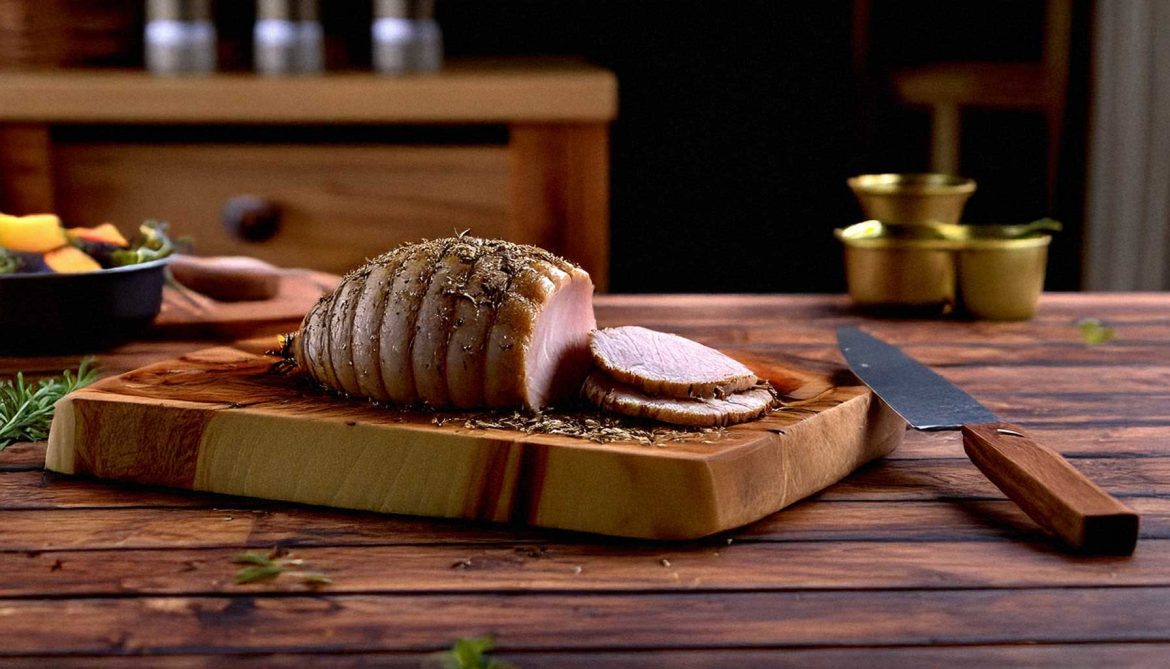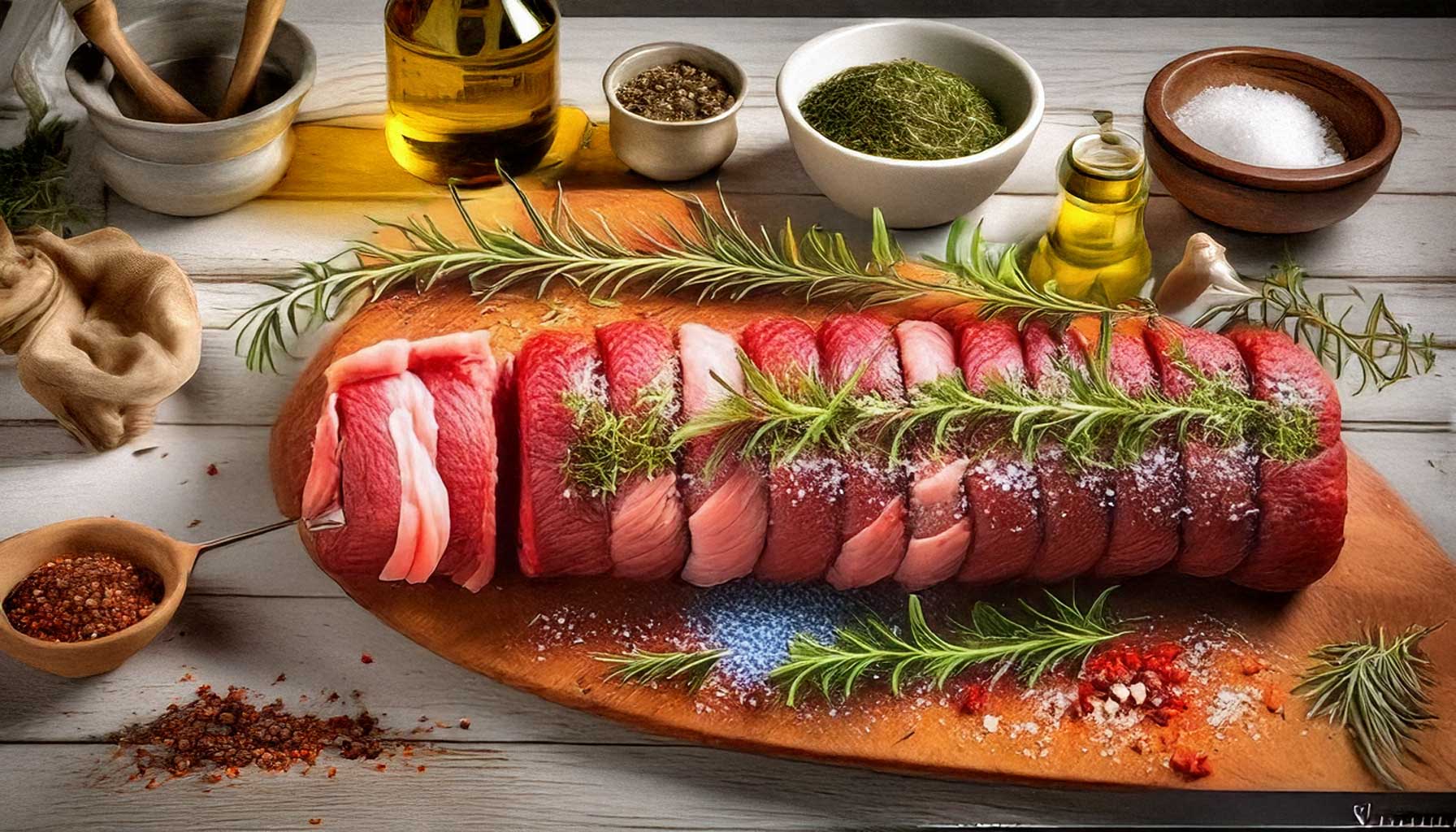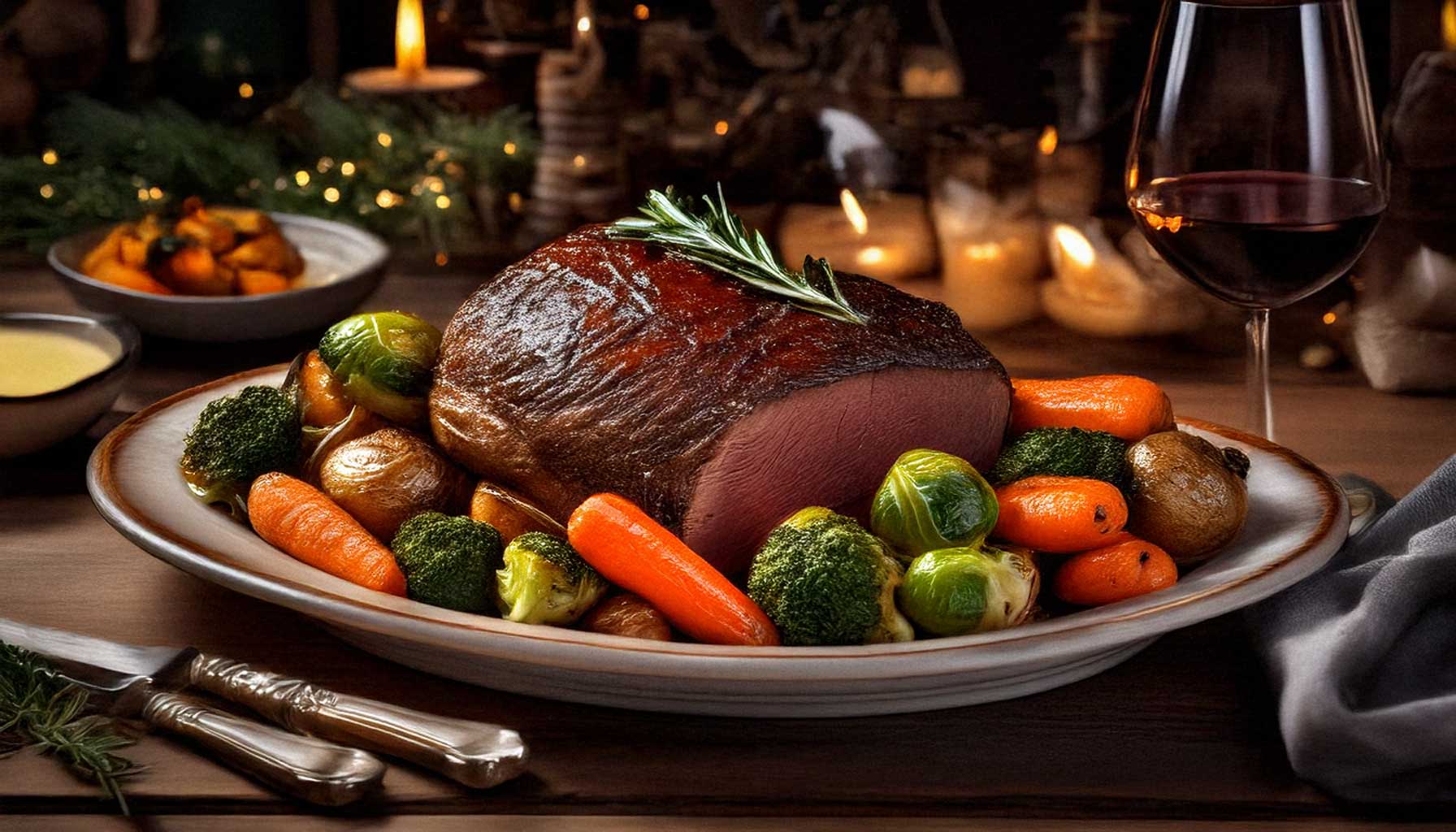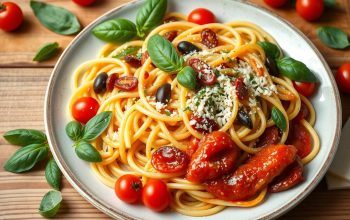Why a Festive Roast Steals the Spotlight
Roasts are more than just food; they are a celebration of flavor, texture, and aroma. The ideal roast achieves its pinnacle at an internal temperature between 80°C and 120°C, with cooking times varying depending on the type and size of the meat. But what truly sets a roast apart is the care invested in selecting, seasoning, and cooking the meat.
Choosing the Right Meat
Quality Matters
- Marbling and Age: Young, well-marbled meat tends to be tender and flavorful.
- Ethical Sourcing: Opt for cuts from animals raised in humane conditions for superior taste.
- Optimal Cuts: Shoulder, brisket, or leg cuts work excellently for slow cooking, while tenderloin or ribeye are perfect for quick roasting.
Portion Planning
To ensure everyone enjoys a hearty serving, allocate 250-300g of raw meat per person, accounting for about 10% weight loss during cooking.
Prepping Like a Pro
Preparation is the secret to a succulent roast.
- Room Temperature Matters: Take the meat out of the fridge an hour before cooking (except poultry) to prevent toughness.
- Pat Dry and Season: Use a clean kitchen towel to pat the meat dry. Season generously with salt and your preferred spices right before cooking to lock in juices.
Pro Tip: For an extra burst of flavor, marinate the meat overnight in a blend of wine, herbs, and spices.
Cooking Techniques for the Perfect Roast
Low-Temperature Cooking
Temperature: 80°C-120°C
Best For: Larger cuts like roast beef or pork shoulder.
Outcome: Even cooking and tender meat.
Traditional Roasting
Temperature: 120°C-160°C
Best For: Filet or lamb racks.
Outcome: Juicy meat with a crisp exterior.
Mastering the Perfect Crust
- Start cooking at low heat to ensure even doneness.
- Finish with a high-heat sear at 180°C to lock in juices and create a crust.
- Rest the meat for 10–15 minutes before carving.
With these techniques, you’ll achieve a beautifully golden, crispy crust every time.
Temperature Guide
| Meat Type | Target Temperature (°C) | Doneness |
|---|---|---|
| Beef Tenderloin | 38-55°C | Rare to Medium Rare |
| Pork Roast | 65-70°C | Medium |
| Chicken | 80°C | Fully Cooked |
| Lamb Leg | 50-60°C | Medium-Rare to Medium |
Side Dishes to Complement Your Roast
Traditional Favorites
- Mashed Potatoes
- Roasted Vegetables
- Stuffing
- Red Cabbage
Seasonal Specialties
- Spring Greens
- Winter Root Vegetables
- Grilled Asparagus
Sweet Accompaniments
- Cranberry Sauce
- Baked Apples
- Preiselbeeren Jam
Expert Tools for Roast Mastery
Having the right tools in your kitchen can make all the difference in executing a flawless roast. Here are some essentials for any aspiring roast chef:
Thermometers
- Meat Thermometer: Ensure precision by measuring internal temperatures to achieve your desired doneness.
- Oven Thermometer: Double-check your oven’s accuracy to avoid over- or under-cooking.
Cookware
- Roasting Pan: A sturdy, heavy-bottomed pan ensures even cooking and captures flavorful drippings for sauces.
- Cast-Iron Skillet: Ideal for searing meats before roasting.
- Baking Rack: Elevates the meat, allowing heat to circulate evenly for consistent cooking.
Knives and Accessories
- Carving Knife: A sharp, well-balanced knife is essential for clean slices.
- Basting Brush: For applying marinades or glazes during cooking.
- Foil and Butcher’s Twine: Helps retain moisture and secure stuffed roasts.
Time Management for Stress-Free Cooking
A well-organized plan is key to hosting a successful and enjoyable meal. Follow these steps to streamline your preparation:
Prep in Advance
- Marinate Early: Start marinating your meat a day ahead for deeper flavor infusion.
- Chop Vegetables: Pre-cut your sides and store them in airtight containers.
- Prepare Sauces: Make your gravy or other sauces ahead of time, so they’re ready to heat and serve.
Schedule Cooking Times
Create a timeline to ensure every dish is ready simultaneously:
- Preheat the oven and start with the roast.
- Begin roasting your vegetables halfway through the meat’s cooking time.
- Keep sauces and sides warm on the stovetop or in a warming drawer.
“Through careful planning and preparation, you can reduce stress and focus on creating a delicious meal for your guests.”
Carving and Serving
Carving a roast is an art that ensures each slice is tender and flavorful. Here’s how to master the technique:
Let It Rest
After roasting, rest the meat for 10–15 minutes under foil. This redistributes the juices, ensuring every bite is succulent.
Carving Basics
- Use a sharp carving knife for clean, effortless slices.
- Always slice against the grain to shorten the muscle fibers and enhance tenderness.
- For bone-in roasts, carve along the bone for easy removal.
Serving Tips
- Place slices on a warm platter to keep them hot.
- Offer sauces or gravy in separate serving dishes to allow guests to customize their meal.
Creating a Mouthwatering Sauce
The sauce can elevate your roast to gourmet status. Start with the drippings from your pan, then build layers of flavor:
Classic Gravy Recipe
- Deglaze the roasting pan with wine or broth to release flavorful bits.
- Add flour or cornstarch to thicken.
- Stir in cream or butter for richness.
- Season with herbs like thyme or parsley for a fresh finish.
Alternative Sauces
- Red Wine Reduction: Perfect for beef roasts, made with wine, shallots, and demi-glace.
- Mustard Cream Sauce: Ideal for pork, blending Dijon mustard with heavy cream.
- Citrus Herb Sauce: A light pairing for poultry, featuring lemon zest and dill.
The Art of Seasoning and Marinating
Seasoning and marinating are critical steps in elevating a roast from good to unforgettable. The choice between a quick seasoning before cooking or an overnight marinade depends on the meat type and flavor profile you want to achieve.
Quick Seasoning
Seasoning right before cooking is ideal for tender cuts like beef tenderloin or pork loin. Use a simple rub of salt, pepper, and herbs to enhance the natural flavors of the meat.
Overnight Marinades
Marinating tougher cuts like lamb shoulder or brisket overnight allows the flavors to penetrate deeply. Use these ingredients for the ultimate marinade:
- Acidity: Wine, vinegar, or citrus juices help tenderize the meat.
- Herbs and Spices: Rosemary, thyme, or garlic add depth and aroma.
- Oil: Helps the marinade stick and keeps the meat moist during cooking.
Avoid sugary marinades for high-heat cooking as they can burn quickly. For sweet glazes, apply them during the last 10 minutes of cooking.
Balancing Aromas
A well-rounded spice blend ensures complex flavors. Common spice combinations include:
- Mediterranean Blend: Oregano, basil, and garlic.
- Eastern Spice Mix: Cumin, coriander, and ginger.
- Holiday Classic: Cinnamon, cloves, and nutmeg.
Plating and Presentation
When it comes to serving a roast, presentation is as important as flavor. These tips will help you plate your roast like a pro:
Resting and Slicing
- After cooking, rest the roast for at least 10–15 minutes under foil. This helps the juices redistribute throughout the meat.
- Use a sharp carving knife to slice against the grain for tender, easy-to-eat portions.
Arranging the Plate
- Place slices of the roast in the center of a warm plate.
- Surround the meat with colorful sides like roasted vegetables or mashed potatoes for visual appeal.
- Garnish with fresh herbs, such as rosemary sprigs or parsley, for a polished look.
Beilagen That Steal the Show
Pair your roast with side dishes that complement its flavor. The right sides can elevate the entire meal:
Potato-Based Classics
- Mashed Potatoes: Creamy and buttery, a timeless favorite.
- Roasted Potatoes: Crispy on the outside, fluffy on the inside.
- Dauphinoise Potatoes: Thinly sliced, baked with cream and cheese for decadence.
Vegetable Sides
- Green Beans: Sautéed with garlic and almonds for crunch.
- Honey-Glazed Carrots: Sweet and savory, a delightful pairing for any roast.
- Balsamic Brussels Sprouts: Roasted until caramelized and drizzled with balsamic glaze.
Unique Additions
- Yorkshire Pudding: Light and airy, perfect for soaking up gravy.
- Cranberry Sauce: A sweet-tart complement to rich meats.
- Stuffed Mushrooms: Filled with cheese and herbs for a sophisticated side.
Final Thoughts
The art of preparing a festive roast lies in the details—from the choice of meat to the final garnish. With the tips and techniques outlined in this guide, you’re equipped to create a roast that will be the highlight of any celebration.
So, are you ready to try your hand at the perfect roast? Share your results or any questions in the comments below—we’d love to hear from you!





